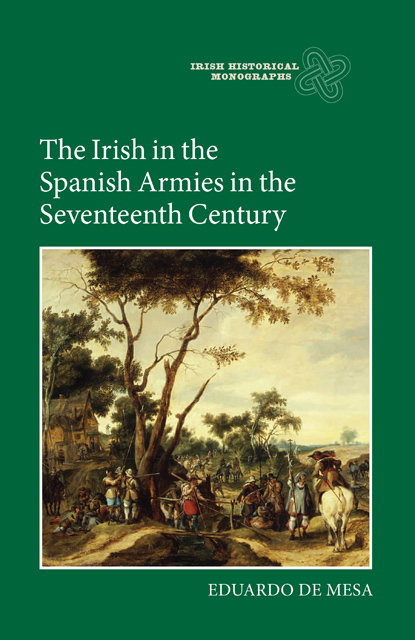1 - Origins, Composition and Strength
Published online by Cambridge University Press: 23 February 2023
Summary
The War of Flanders
According to the members of the Spanish Council of State, the Dutch Revolt and the ensuing Eighty Years’ War (or the War of Flanders as it was known by the Spanish) began in 1559. After the return to Spain of Philip II, the son and heir of Emperor Charles V, the Flemish and Walloon nobility felt aggrieved because they had been expelled from power. The Spanish monarch had chosen Philip’s halfsister, Margaret of Parma, as his governor-general, assisted by Antoine Perrenot, the future Cardinal Granvelle, as her main councillor. The local nobility’s influence and power of patronage consequently faded, and they lost much of the status they had enjoyed during the rule of Charles V.
The nobility’s opposition to Philip II gradually became evident. The split broadened as a result of the socio-economic consequences stemming from the long struggle between the Spanish and the French monarchies for European mastery. The struggle ended in 1559 with the Treaty of Cateau-Cambrésis, which recognised the Spanish victory. Although Castile had paid most of the military expenses, in the Habsburg Netherlands the local population believed they had sustained almost all of the costs. The socio-political situation was further compounded by religious affairs as the struggle between the Catholics and the Calvinists became more violent. The royal reaction to the ‘iconoclastic fury’ and other disturbances augmented the confrontation with the noblemen; many of them had embraced Protestantism or were crypto-Protestants. Moreover, the prince of Orange, William the ‘Silent’, a former supporter of Charles V and one of the strongest noblemen of the Low Countries, had begun to favour the rebel faction.
The king eventually decided to send an army to re-impose his rule over the Habsburg Netherlands. The Army of Flanders was created in 1567 after the arrival of four Spanish Tercios, led by the duke of Alba. The army numbered eight thousand foot soldiers supported by two thousand cavalry, and gradually expanded to include units of foot and horse of Italian, Walloon, Burgundian and German troops. Non-Spanish units were referred to as ‘nations’.
Political affairs under Alba’s governorship led most of the population, including the Catholics, into open revolt.
- Type
- Chapter
- Information
- Publisher: Boydell & BrewerPrint publication year: 2014



